Synthetics are a great way to really break out the big numbers once in a while. We’ll see later how well that works in real-world application benchmarks. So I’ll start with CrystalDiskMark and four different file sizes. The SSDs were no longer new at the time of the test (I already wrote that, besides I always do these tests at the end for certain reasons) and I also had fill levels of more than 50% before deleting the data several times.
It’s good that the maximum values are almost reached even after many runs and show quite impressive numbers for a portable data medium. That is why the formulation with the “up to” is still quite correct here. But it is also a fact that the limit of 1000 MB/s is not quite reached anymore, no matter how big the file to be written was then.
You can see very well that the pSLC does exactly what it is supposed to and still suffices. The nice thing about the 2 TB SSD is that there is a lot of space left and therefore you should never fill it more than 2/3 with data. A higher load does no harm to reading, only writing will surely reach its limits at some point. And if you do it over and over again, even such an SSD suffers for sure. i will observe this, because the SSD must continue to play the bearer of the video messages in the video studio of igorsLAB. Let’s see.
ATTO works very similarly, although I only work with two sizes here, which ends up being the same. The limit of 1000 MB/s is also missed, but what the heck, it is still easily enough for the intended purpose
Video streaming
But what happens when you stream a video? For this purpose, the industry uses the AJA benchmark, which is in effect an interface between synthetic benchmarks and practical application. The SanDisk Professional G-Drive SSD 2TB doesn’t fluff here either, even though it already deviates a bit from the theoretical write and read rates. Let’s first look at the writing process of the encoded video content. But you can see very nicely that from about 30 GB stream the write rate collapses, because the cache is then written full.
| Resolution: | 4K RED HD |
| File Size: | 64 GB |
| Codec : | 16bit RGBA |
| Video file: | Movie |
| Number of frames | 1035 |
| Write rate | 12 fps |
| Write rate | 772 MB/s |
| Minimum rate | 580 MB/s |
| Maximum rate | 925 MB/s |
Reading is also quite fast, although you don’t quite reach the theoretically possible speed here either. In return, the read rates are really very constant and without any dips.
| Number of frames | 1035 |
| Write rate | 15 fps |
| Write rate | 962 MB/s |
| Minimum rate | 934 MB/s |
| Maximum rate | 967 MB/s |
We see that the comments made on the previous page about the pSLC cache and the behavior with the larger file blocks are completely true. Smaller file movements would be even faster if you leave out the overhead of the file system.















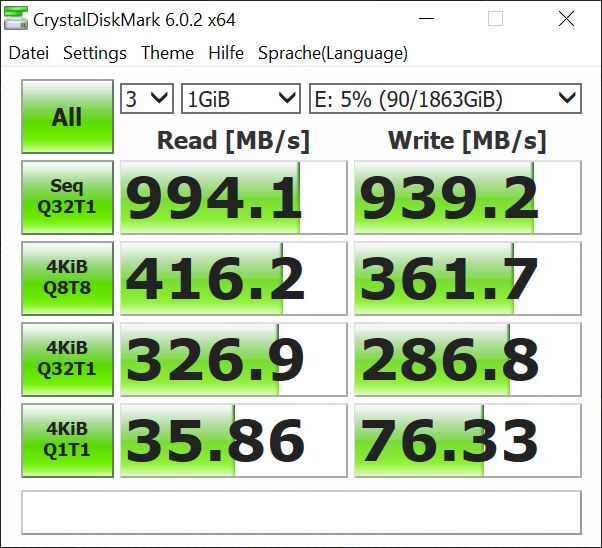
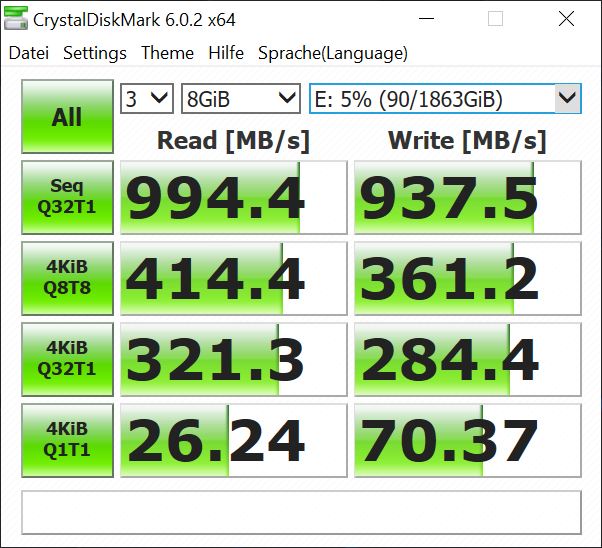
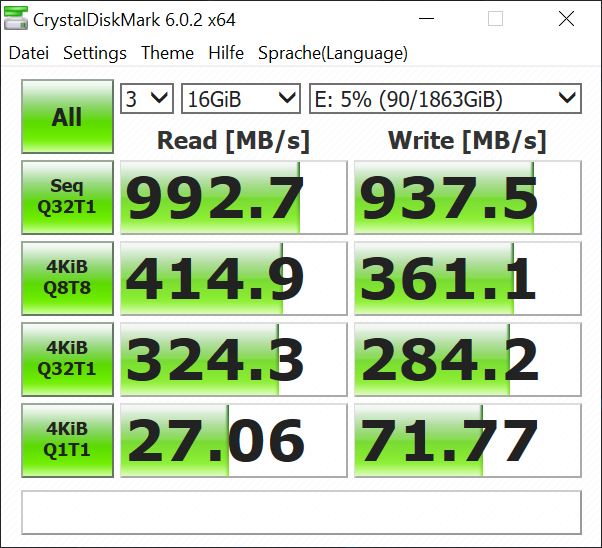
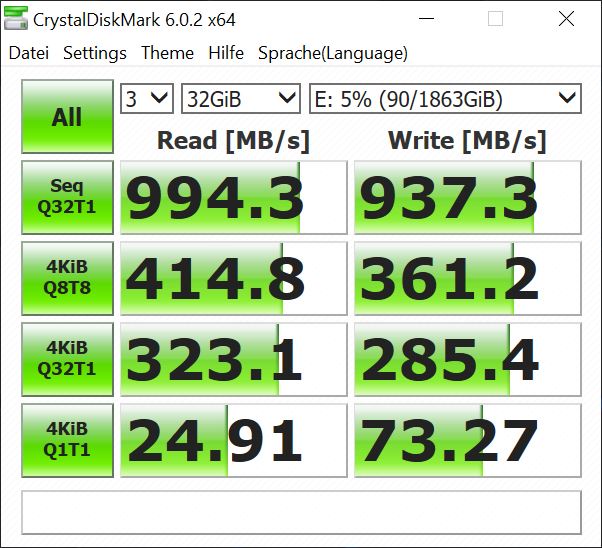
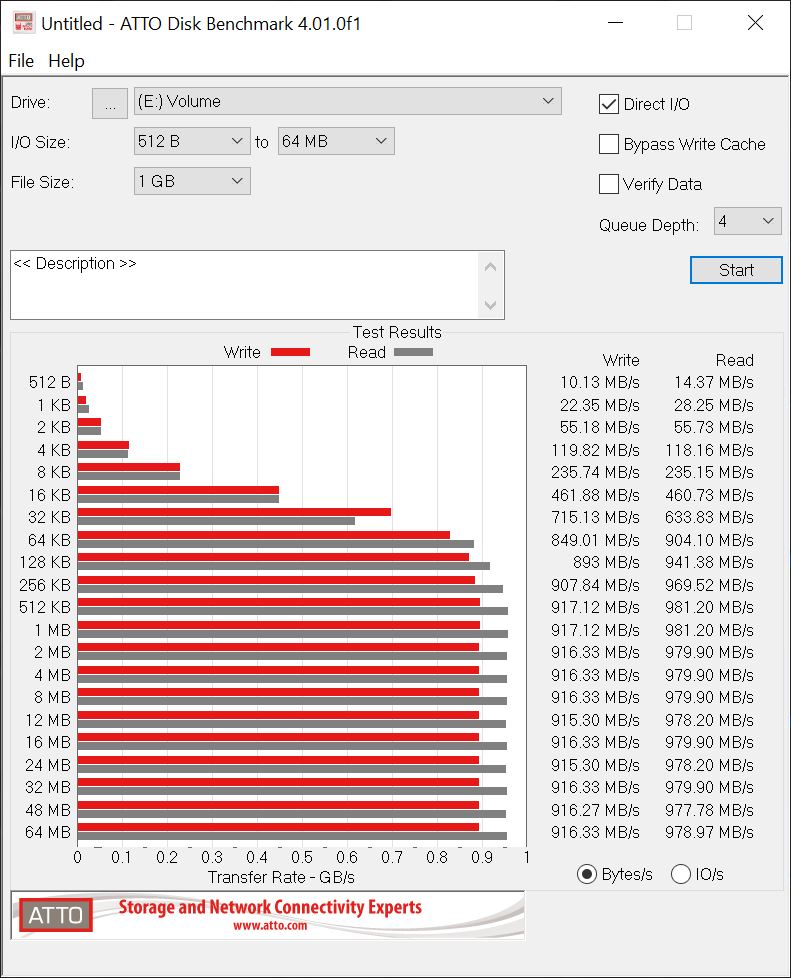
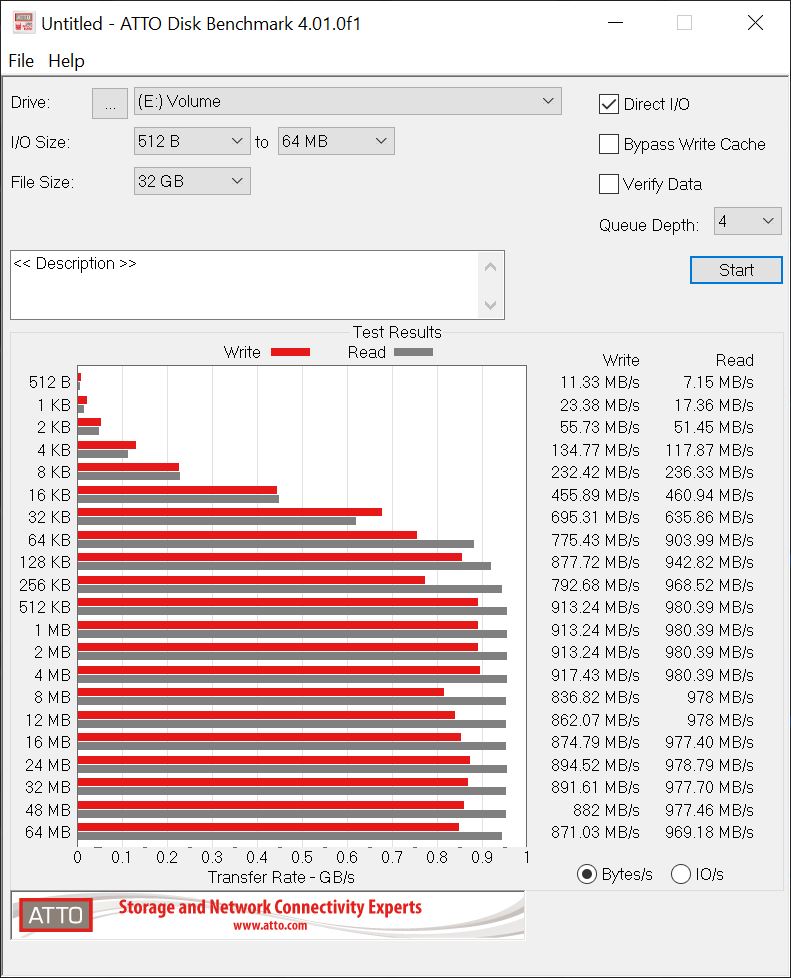
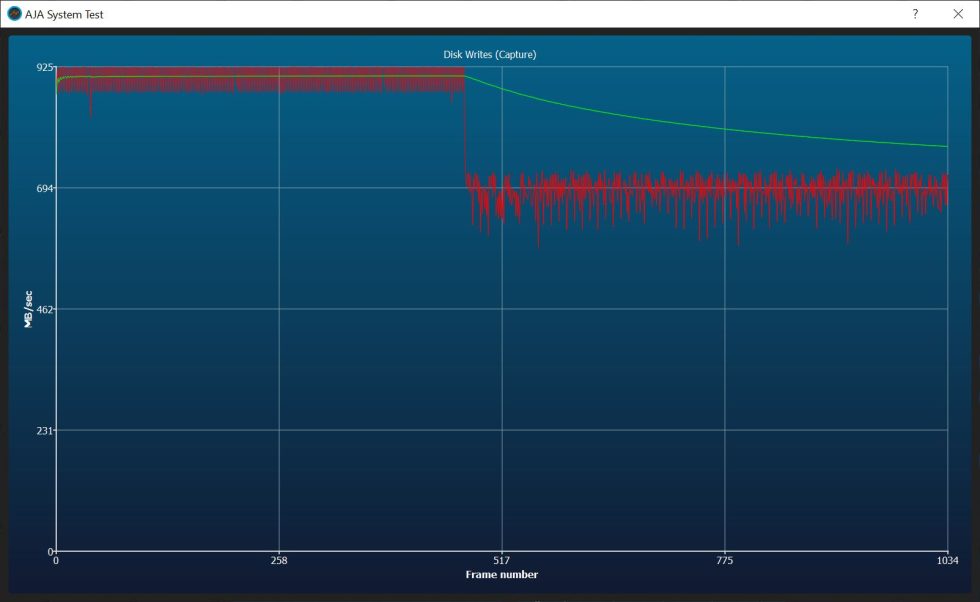
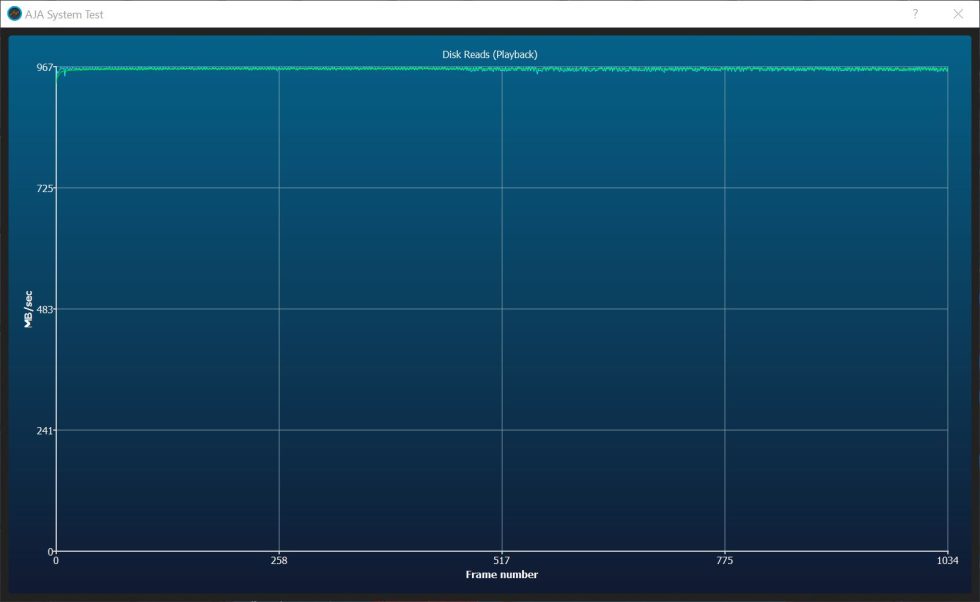


















10 Antworten
Kommentar
Lade neue Kommentare
Urgestein
1
Urgestein
Urgestein
1
Urgestein
1
Urgestein
Urgestein
Urgestein
Alle Kommentare lesen unter igor´sLAB Community →